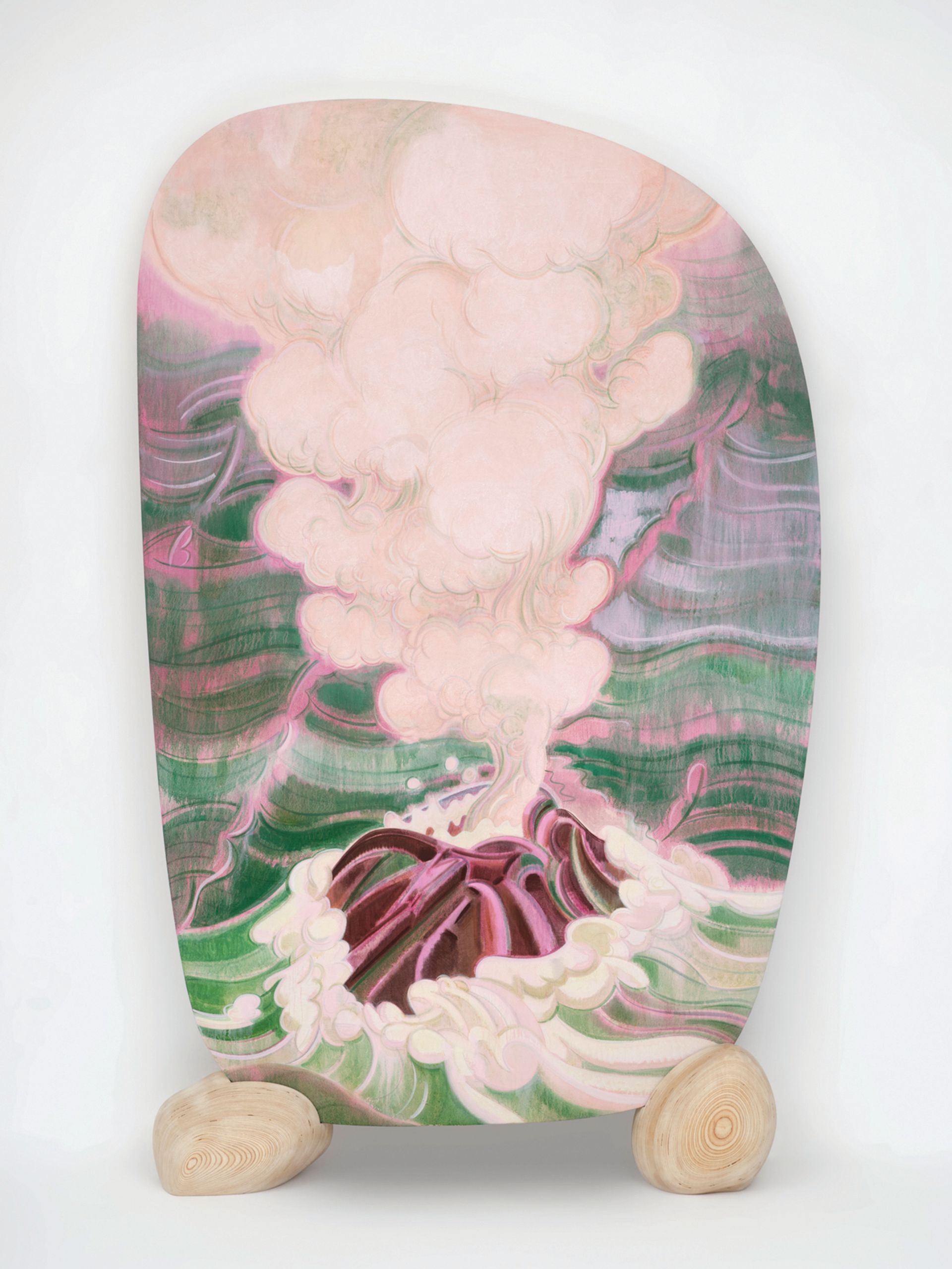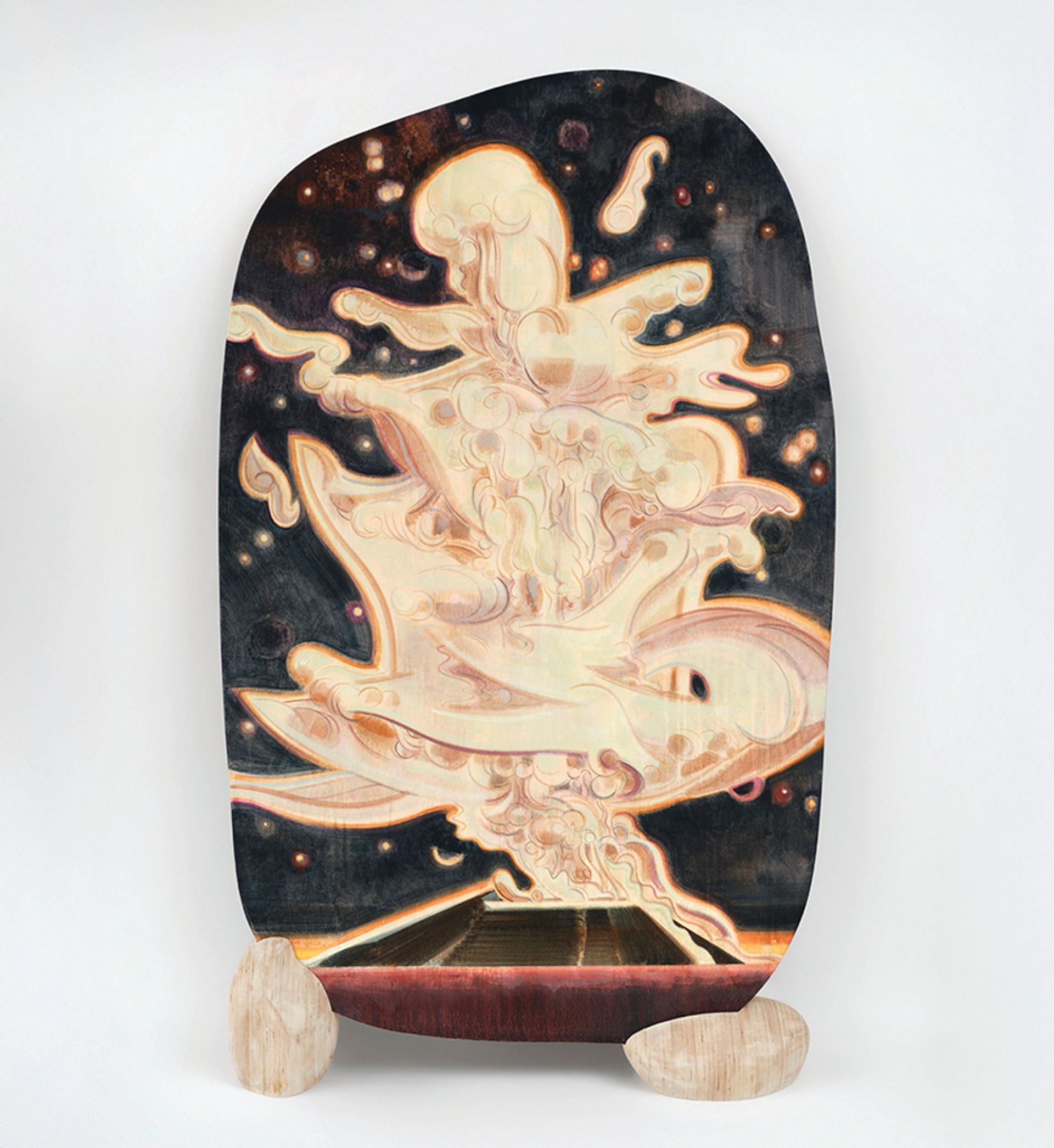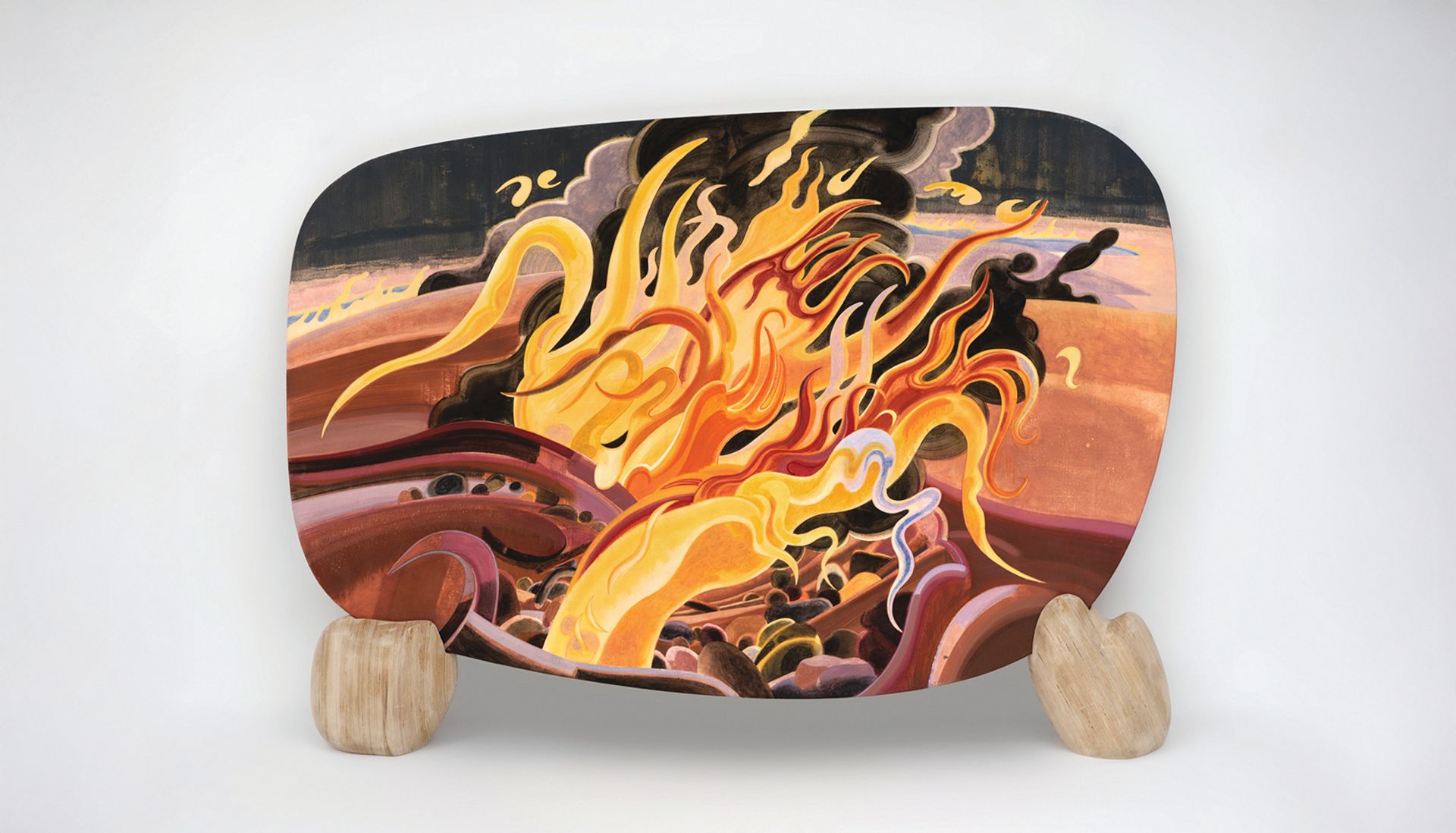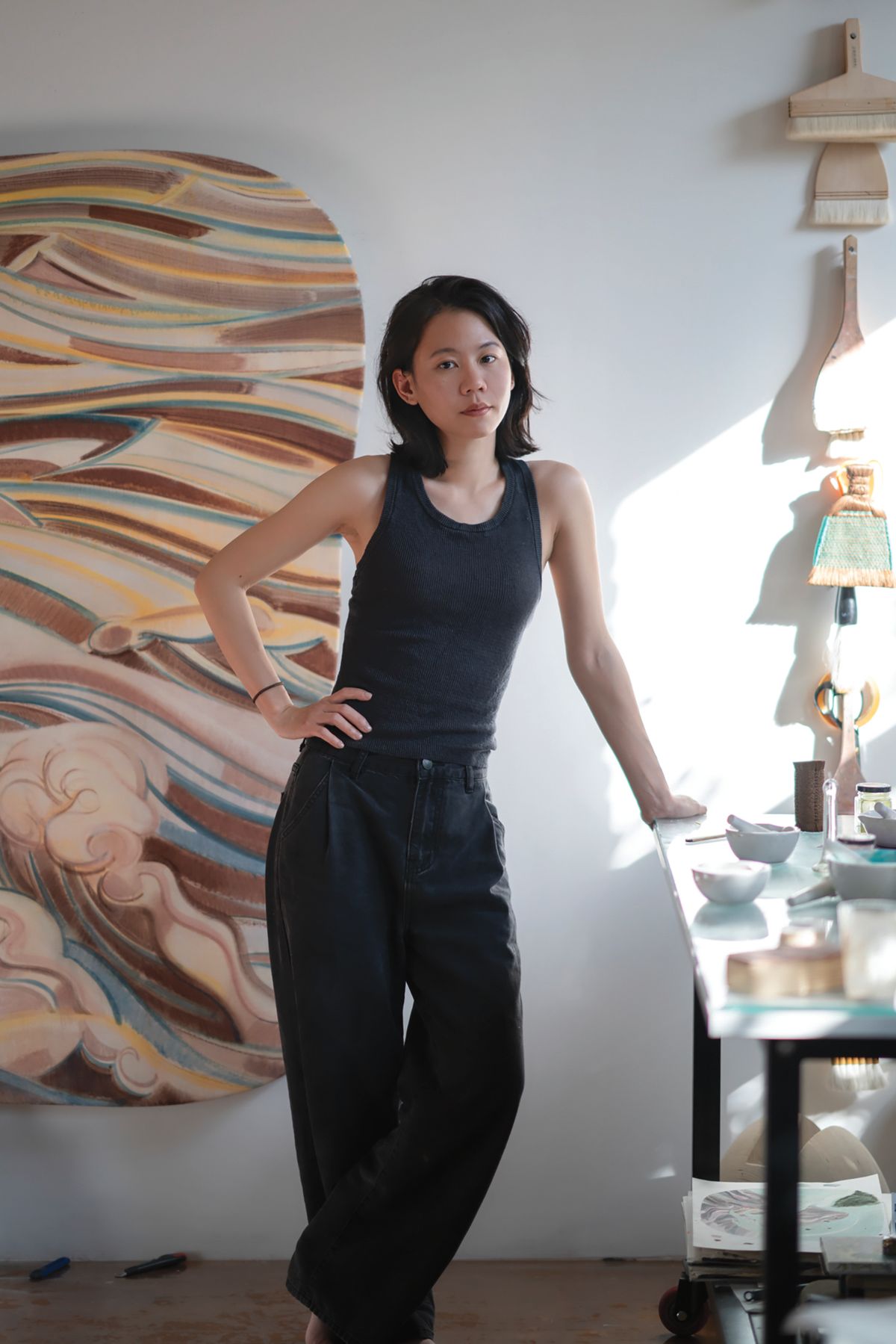The Los Angeles-based Taiwanese artist Su Yu-Xin creates ethereal landscapes in her paintings using natural pigments collected from sites around the world. Her first solo exhibition in the US, Searching the Sky for Gold at the Orange County Museum of Art, features a series of recent paintings that visualise natural phenomena—rain, fire and clouds—that are features of the California coastline and other landscapes she encounters in her travels.
Yu-Xin was born in Hualien in 1991. She earned her MFA from the Slade School of Fine Art, University College London, and her BA in ink painting from the Taipei National University of Arts. She most recently had a solo exhibition at the Longlati Foundation in Shanghai in 2023. The same year, she was featured in group exhibitions at Gagosian in Hong Kong and Perrotin in Shanghai. She was also featured in the 2022 Beijing Biennial.
The Art Newspaper: What brought you to Los Angeles?
Su Yu-Xin: I moved about two years ago after spending five years in Shanghai. Like most migrations, there wasn’t a single reason but a confluence of things. If I had to distil it into one thought, it would be the desire to see more of the world. I was born and raised in the sub-tropical Pacific landscape, growing up on Taiwan’s east coast by a trade port, facing the vast ocean and inhaling the mingling scents of cruise diesel and sea salt. Perhaps it was from that time that I first began to wonder about the world.
I have family members in California, some of whom were born and raised here who were part of a migration wave from Taiwan in the 1990s, spurred by both economic aspirations and political anxieties following the handover of Hong Kong to mainland China. Unlike them, I arrived as a painter. In doing so, I found that my practice could become a way of constructing places—places made from many other places. After years of painting landscapes across Asia, I wanted to know if the other side of the Pacific held something just as endearing.

The Birth of an Island (Niijima, South of Iwo Jima) (2024). Su Yu-Xin’s training in Chinese ink painting paved the way to her current practice of creating her own pigments using raw materials ranging from shells and copper to diamond dust and even volcanic ash
Courtesy of the artist

Dust Crown (Mount St. Helens) #2 (2024)
Courtesy of the artist

Heart of Darkness (Underground Burning, Utah) (2024)
Courtesy of the artist
What are some of the hybridised landscapes in the exhibition?
Heaven’s Sigh (Mount Merapi) (2024) is a portrait of Mount Merapi, a conical volcano at the heart of Java, Indonesia. Its magma dome is formed from black and red volcanic rock and soil. A thin veil of cloud drifts from the crater, its metallic greenish tones created by pyrite and volcanic dust. Pyrite—often called “fool’s gold” for its seductive shimmer, was once mistaken for real gold during the California Gold Rush.
Birth of an Island (Niijima, South of Iwo Jima) (2024) references an island that emerged from the ocean near Japan. The underground volcanic eruptions pushed the hot magma to the surface of the sea, instantly vaporising the sea water and creating a scene in which the earth looks incredibly alive. The dark volcanic island was painted with California ochre. The translucent fountain of vapour rising into the sky was powdered with white pigment made from seashells—material that should be resting on the seabed instead of flooding the air.
You collect and create your own pigments. How did you develop this process?
I was trained in Chinese ink painting, where grinding one’s own ink and preparing fresh animal glue is common. But I didn’t start collecting raw materials to make my own pigments until after finishing school in London, where I learnt the materials of oil painting. There are maybe three or four companies in the world that produce artist-grade oil paints. Realising that almost every painter is working with the same selection of colours felt strange—like everyone cooking with the same limited set of ingredients. I wanted to see how far I could go with it. I thought maybe I’d make ten good colours, or 30. But instead it changed my entire understanding of painting and its history. Now my studio is filled with around 200 jars, cans and sacks of colours, ever-changing and growing.
Where did you collect the pigments?
Everywhere I could. The material I use to prime my canvases often says the most about the place in which I make the work. A primer requires a large quantity of filler, so I use local soil, mixing it with chalk and heating it with gelatin. This humble layer sets the base tone for all my paintings made here in Los Angeles. I’ve also used many seashells collected from local beaches for pastel tones. Some of my copper pigments were mined in Oregon. I’ve worked with lab-processed diamond dust from California, helenite made from Mount St Helens’s volcanic ash, glaze powders from Japan, meteorite dust gifted by a friend and sulphur from the mining town where my father grew up.
How would you describe this new body of work?
The works could be seen as samples of atmospheric conditions—spectacles collectively built from the small and the micro. We have many words for air: cloud, fog, mist, vapour and smoke. The name shifts as the air itself changes, yet these transitions are rarely abrupt. The sky is an intricate mixture of powder, dust and molecules, much of which goes unnamed. These in-between states of air are like colours on a canvas that lack names—alive, nuanced and elusive. Painting is uniquely suited to house these air phenomena, because painting itself is made of particles. Pigments, suspended and floating, eventually fossilise into an image.
- Su Yu-Xin: Searching the Sky for Gold, Orange County Museum of Art, until 25 May


